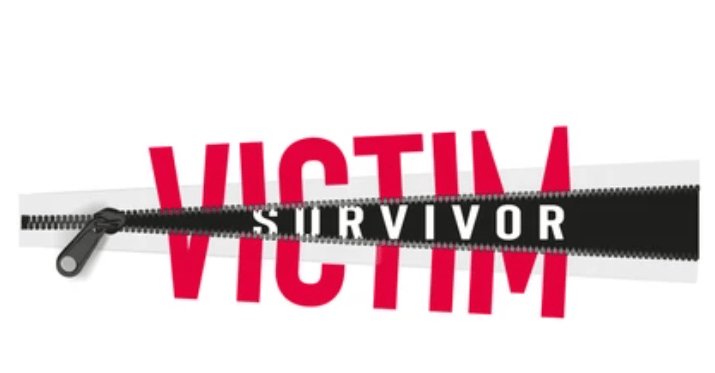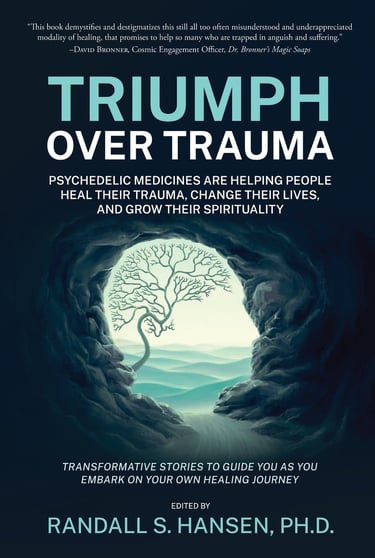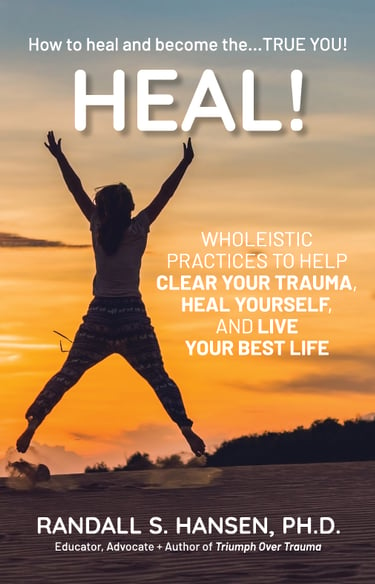How to Move From Victim to Survivor
“Trauma creates change you don’t choose. Healing is about creating change you do choose.” -Michele Rosenthal, Trauma Recovery Specialist
Full disclosure: I write from experience and education. I was a victim of a sexual assault by an Episcopal priest, but through work and community, I am now a survivor.
The past holds all our trauma, all the bad things that have happened to us. Trauma sometimes leaves us with physical and psychological changes. And if we are not working through those experiences, it can be easy to stay in the land of victimhood and harmful patterns of thinking and acting. We can let the trauma define us forever, or see it as a temporary roadblock to a better life.
Staying in victim mode is an unhealthy mindset that can eventually alter our brain, erecting walls built on fear and self-pity. When we assume the role of victim, our ego is in control, often leading to unhealthy coping mechanisms (and addictions).
How do you know the difference between victim and survivor? A victim is stuck in the past, often feeling defeated and powerless, full of self-pity. A survivor is focused on the present and the future, refusing to give up, and focused on reclaiming their power.
We are initially victims – of crimes and events that should never have happened to us – and it is fully okay to feel that way and expect others to respond to you in certain ways. But victimhood is not a place to build our new home; instead, we must work on moving from the initial shock and pain, anger and shame, to a place where we can see hope and a positive future – to a place of being a survivor… and, ideally, eventually to a place of thriving.
We are not responsible for what happened to us, but we are responsible for healing ourselves. It takes a change in perspective to understand and accept that we can’t change what happened to us, but we can change how we move forward from it.
Tips for Moving From Victim to Survivor
The most important key to moving from victim to survivor is finding the path that helps you break free from the bondage that keeps you locked in helplessness and self-pity. When we face and integrate these past trauma wounds, it allows us to move forward toward survivor.
1. Acknowledgment and Acceptance. Take time to understand what has happened to you and what has changed within you because of it. Accepting that the trauma happened to you and there is no way to go back and change the past. It’s this first step when you have to make a conscious decision to take charge of your situation.
2. Self-Care Plan. It is important to develop and implement a plan that sets up a new daily routine that reinforces healthy boundaries and activities. It can include anything done to keep mentally, emotionally, physically, socially, and spiritually healthy and feeling safe. Some self-care activities that people have used are journaling, painting, breathwork, prayer/meditation, yoga, dancing, walking in nature, and showing kindness to others.
3. Get Help Where and How You Need It. We have to safely face the trauma wounds to move from victim to survivor, and that often takes the form of talking to someone about the trauma – and that can be with a licensed therapist or coach, a trusted pastor or religious leader, a survivor support group, or with one or more loved ones. The key is finding the right mix of help that works for you.
4. Lean on Community. Even if you are the greatest introvert, please consider the power of love and acceptance from your people – your community, your tribe – to support and uplift you… to see and hear you. Community can be a small circle of friends, a mix of friends and family, and a group that you belong to.
5. Reinvent Yourself. The goal is not to forget the trauma or pretend it never happened, but to find a path through the trauma to a place of meaning, purpose, and hope. I have been so empowered hearing stories of people using their trauma as a base of strength, as something that makes them unique, having the ability to flip the trauma from a source of negative energy to a source of positive power.
Final Thoughts on Moving from Victim to Survivor
The amazing thing about a healing journey is that you will discover new things about yourself and new strengths and abilities you never knew you had. But remember that a healing journey is rarely a straight line; it’s a road with a few bumps and twists and turns – but the end result is always finding true healing.
Stay open to new healing modalities, whether Reiki, breathwork, tapping, EMDR, or psychedelic plant medicines. (Learn more at HealMeWhole.com.)
Practice forgiveness, as you can, both for yourself and your perpetrator – but especially for yourself. Forgiveness is NOT a weakness, but a great strength because with forgiveness you release the hold the trauma has on you.
Finally, remember that the ultimate goal is to get to the finish line of being a Thriver, where you are empowered and excited about the future, and not just a Survivor – but that journey starts with the acknowledgment that you will no longer be a victim.
Additional Trauma Healing Resources
Dr. Randall Hansen is an advocate, educator, mentor, ethicist, and thought-leader... helping the world heal from past trauma. He is founder and CEO of EmpoweringSites.com, a network of empowering and transformative Websites, including EmpoweringAdvice.com.
He is the author of the groundbreaking Triumph Over Trauma: Psychedelic Medicines are Helping People Heal Their Trauma, Change Their Lives, and Grow Their Spirituality and the well-received HEAL! Wholeistic Practices to Help Clear Your Trauma, Heal Yourself, and Live Your Best Life.
His latest book is a true game-changer: The HEALing Revolution Diet: A Science-based Approach to Heal Your Gut, Reverse Chronic Illnesses, Lose Weight, Clear Your Mind, and Increase Longevity.
Dr. Hansen's focus and advocacy center around true healing ... healing that results in being able to live an authentic life filled with peace, joy, love. Learn more by visiting his personal Website, RandallSHansen.com. You can also check out Dr. Randall Hansen on LinkedIn.








